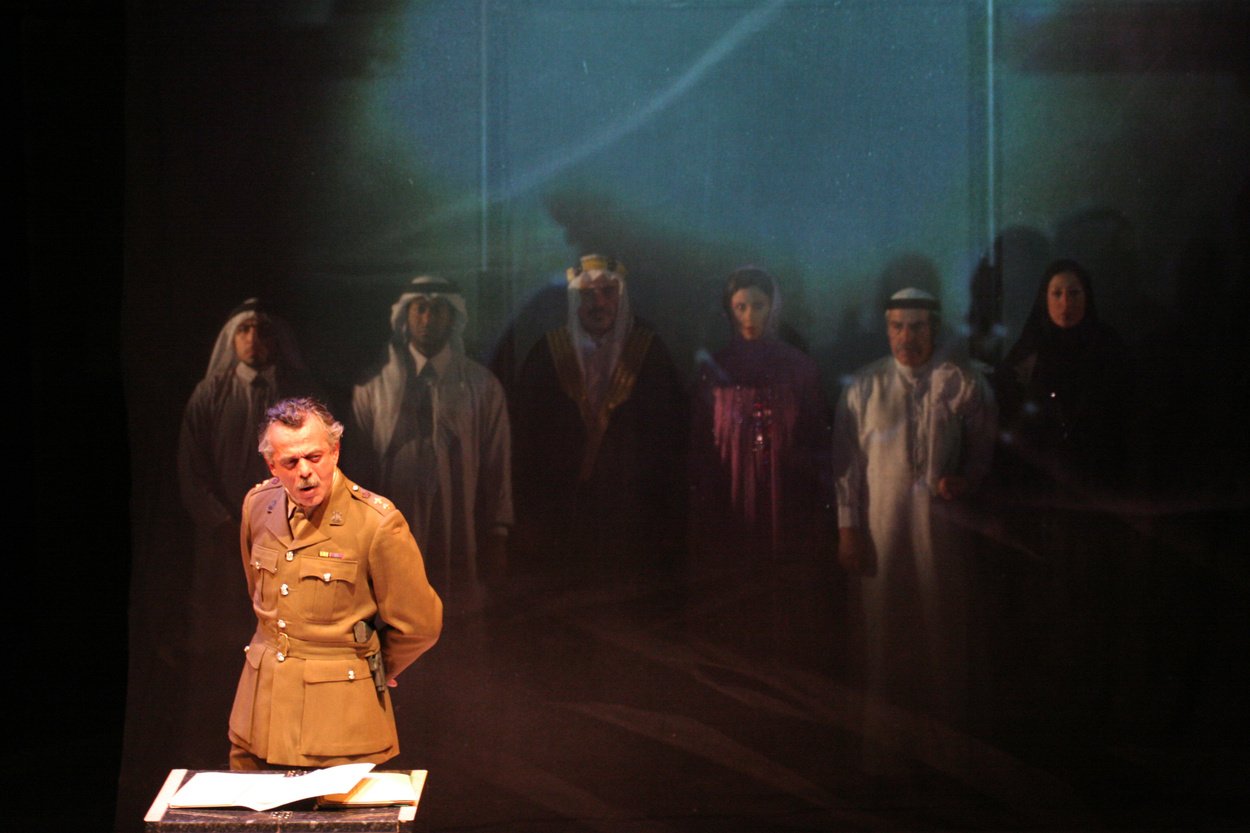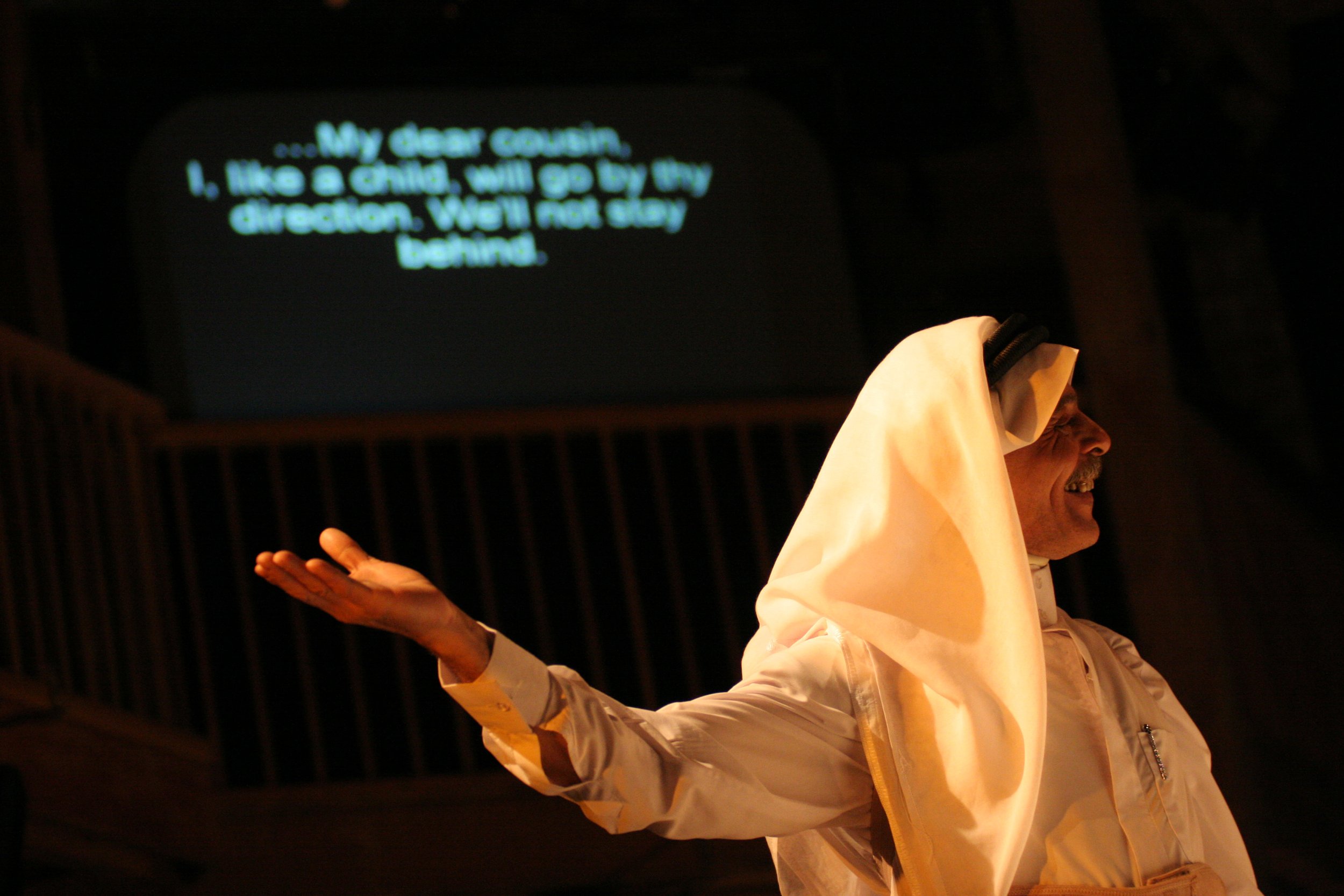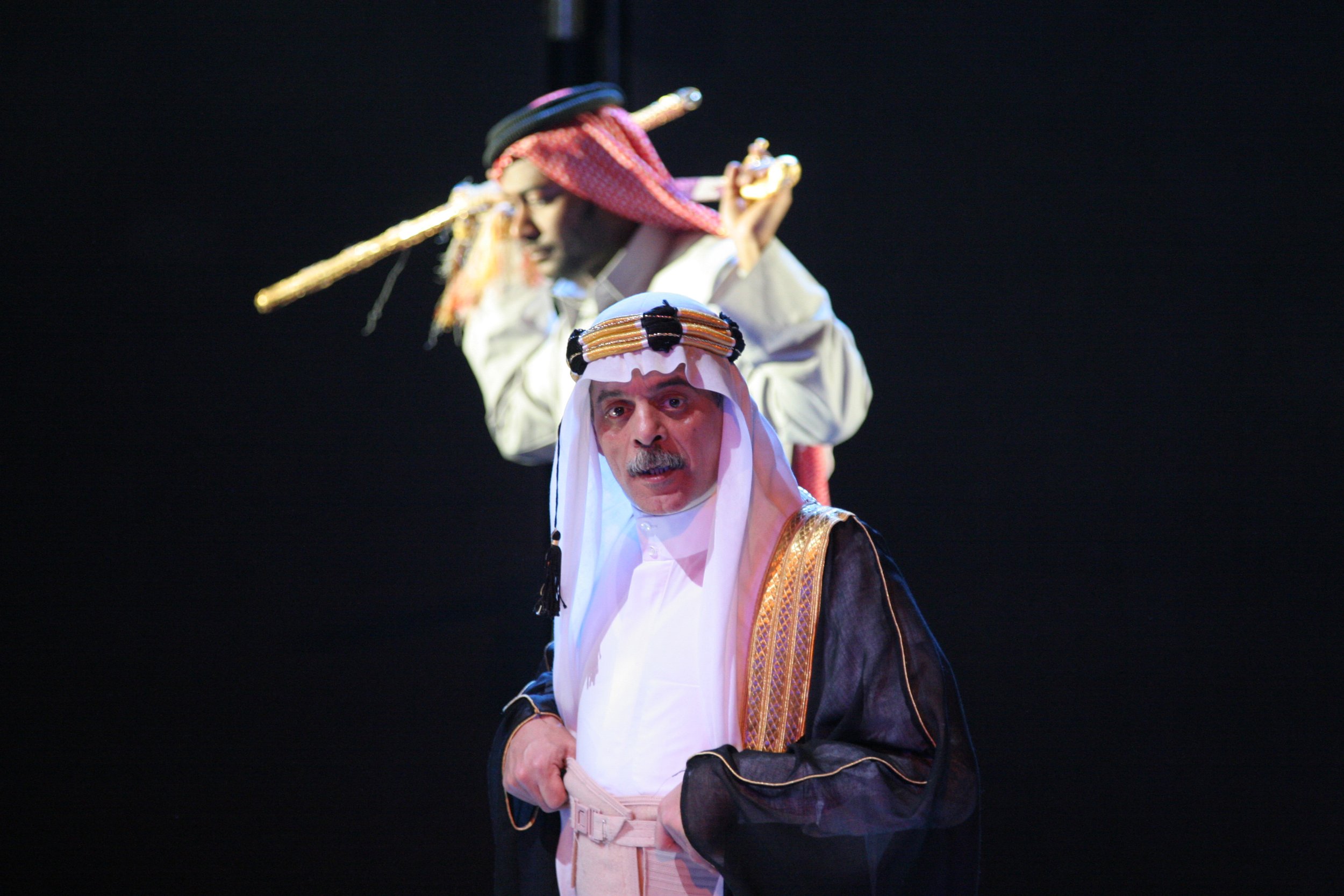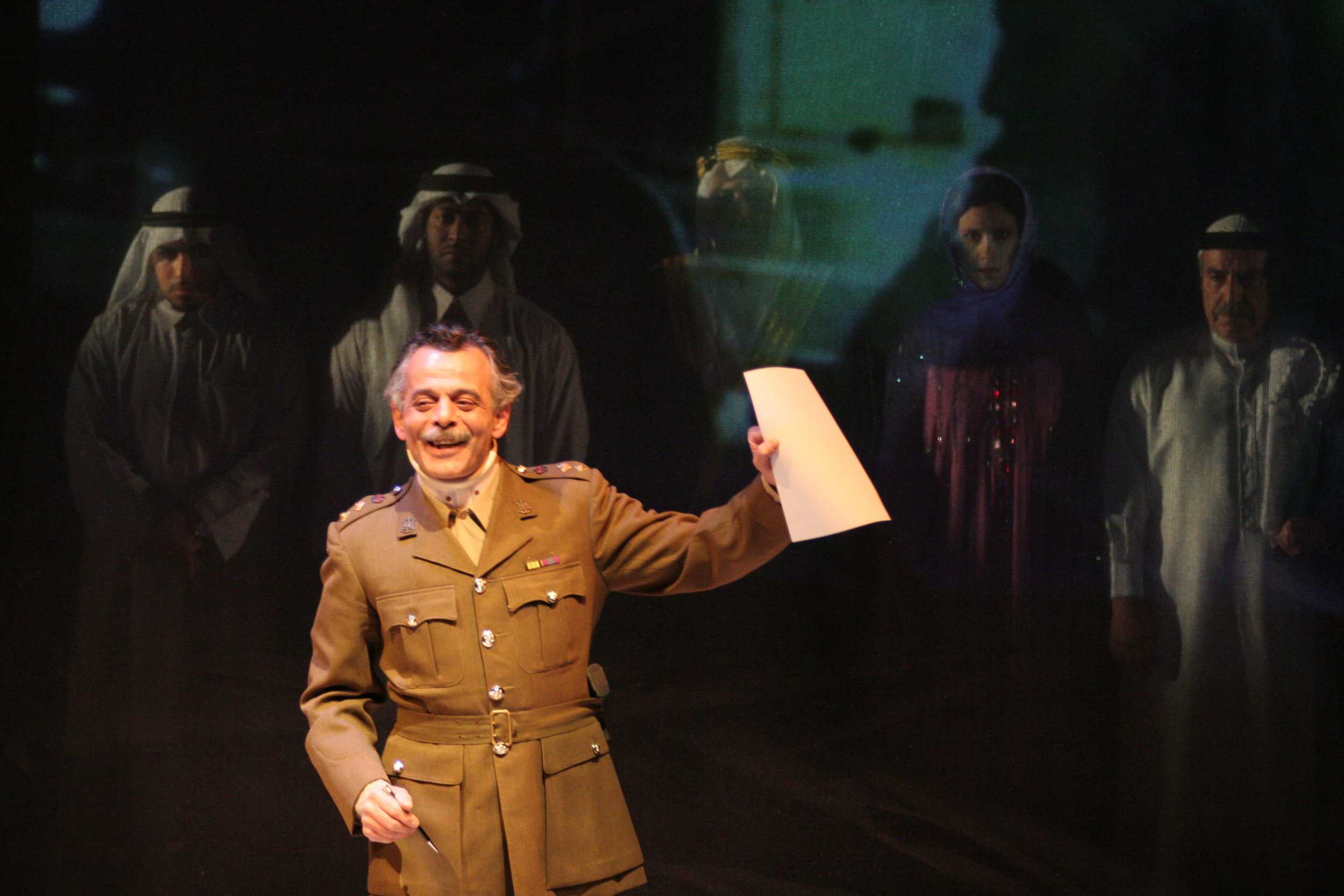
Richard III,
An Arab Tragedy
Richard III, An Arab Tragedy, 2007-09
Credits
A contemporary adaptation of Shakespeare’s classic
Commissioned by the Royal Shakespeare Company for the Complete Works Festival
Adapted & Directed by Sulayman Al-Bassam
Artistic Producer: Georgina Van Welie
Production Designer: Sam Collins
Original Music and Sound Design: Lewis Gibson
Lighting Designer: Richard Williamson
Costume Designer: Abdullah Al-Awadhi
Arabic Translation: Mehdi Al-Sayegh
Cast:
Queen Elizabeth: Carole Abboud
Emir Grey/Ratcliffe: Bashar Abdullah
Emir Rivers/Newscaster: Faisal Al-Ameeri
Mr Richmond: Nigel Barrett
Minister of State Hastings/Lord Mayor: Nicolas Daniel
King Edward IV/Catesby: Monadhil Daood
Palace Advisor Buckingham: Raymond El Hosny
Lady Anne/Mistress Shore: Nadine Joma’a
Emir Gloucester, later King Richard III: Fayez Kazak
Emir Clarence/Stanley: Jassim Al-Nabhan
Queen Margaret/Crown Prince Edward: Amal Omran
Citizens, soldiers and others played by members of the company
Musicians:
Ahmad Al Dabbous, Sami Bilal, Lewis Gibson,
Abdullah Hamad, Faisal Khalaf, Sultan Al Meftah,
Abdullah Sakran
Production Managers: Aude Albiges/Sam Collins
Company Stage Manager: Faisal Al-Obaid
Deputy Stage Manager: Misha’al Al-Omar
Assistant Stage Manager: Saad Samir
Surtitles Director: Wafa’a Al-Fraheen
Technical Stage Coordinator: Corinna MacEwan
Technical Assistants: Andrew Grant/David Glover
Running time, 110 minutes
Performed in English and Arabic
Shakespeare’s text is uprooted from the mediaeval Christian world, reworked and transplanted into the scorching oil-rich Islamic world of the Gulf today. The play unfolds within the hothouse, feudal atmosphere of desert palaces in an oil-rich kingdom. In this world of tribal allegiances, family in-fighting and absolute power, the questions of leadership, religion and foreign intervention that are at the heart of Shakespeare’s play, take on powerful new meanings in a modern context.
The production is a window into the often misunderstood world of the Arabian Gulf in all its richness: its social customs, musical heritage and some of its darker mystical rituals. The production is accompanied by a live sound track, with the chants of pearl divers sounding alongside modern sampled sounds, live African melodies and music from the desert areas of the Arabian peninsula.
Production History
Premiered on 8 February 2007, at The Swan Theatre, Stratford upon Avon (UK) as part of the Royal Shakespeare Company’s Complete Works Festival. Toured to the Pallas Theatre, Athens (Greece) as part of the Attiki Society Festival in May 2007. In 2008, performances included, Al Maidan Theatre (Kuwait); Dar al Assad Opera House, Damascus (Syria) as part of the Damascus Capital of Arab Culture Festival; Les Bouffes du Nord, Paris (France); Bellevue Theatre, Amsterdam, (Holland) as part of the Holland Festival. Revival tour in 2009 to Terrace Theater, Kennedy Center, Washington DC (USA) as part of Arabesque: Arts of the Arab World ; Al Jahili Fort, Al Ain, (United Arab Emirates – VIP UAE premiere); Bait Al Naboodah, Sharjah (United Arab Emirates) as part of the Sharjah Biennial (co-presented with Sharjah Theatre Group); The Cultural Foundation, Abu Dhabi, (United Arab Emirates) and Harvey Theater, Brooklyn Academy of Music, New York (USA), as part of Muslim Voices: Arts & Ideas.
Director’s Note
The play is a mask. A mask not to hide: but to reveal. The mask reveals lines of our own identity that the mirror obliterates. I use the mask to mirror our world. The mask also carries its own essence, rooted in secret and ritual. Cycles of blood and revenge, lamentation and cruelty: These are the lines of the mask. I use our world to mirror the mask.
When the Royal Shakespeare Company first gave me the opportunity to work on this piece, I found myself confronted with two major questions: firstly, how could I take the heart of this text -foreign, strange and distant heart that it is- and transplant it into an Arab frame in such a way that it could still pulse, make sense and live? Then, beyond that -assuming that was possible!- how could I re-present this new ‘body’ in different parts of the world in such a way that it could faithfully carry an Arab geneology, an Arab sense of history and the marks and concerns of an Arab world view? The piece that emerged is an attempt to answer these questions.
The journey of the creation of this piece was a journey between two cultures: we started with no maps. Sometimes we would lose the way and have to fall back onto instinct and experimentation and sometimes we would find bright paths that had been cleared by the passage of humanity over the ages. During this journey we did not give in to the fear of exploring these events within a contemporary Arab context: our own history has taught us first-hand the dangers and bitterness of tyranny. Nor did we shy away from exploring beauty within an Arab-Islamic cultural framework because it is our belief that this very framework, strengthened by auto-criticism and disciplined free thought, is the only real framework through which we can successfully confront the challenges of modernity and move forward with charge of human progress. Through the inspiration of Shakespeare’s dramatic poetry we seek to move beyond the seeming contradictions of Identity and Modernity.





